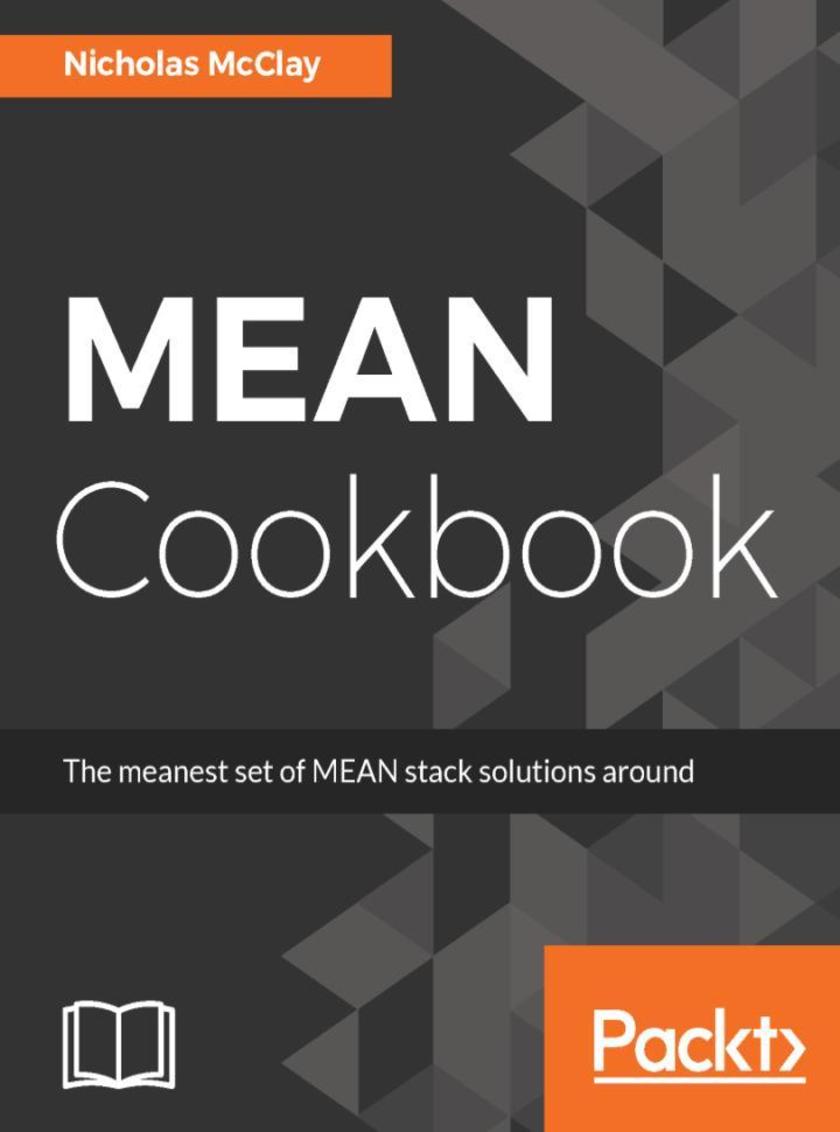
MEAN Cookbook
¥80.65
Over 50 recipes to create full-stack high-performance web applications using pure JavaScript and the MEAN stack. About This Book ? Architect a fully functional stand-alone web application, including the web server, database, and front-end web application ? Improve the performance and maintainability of your MEAN stack application with tips for configuration and optimization ? Highlights MEAN Stack best practices when working with your application Who This Book Is For If you are a JavaScript developer who wants to create high-performing, modern web applications with the MEAN stack, this is the book for you. Web developers familiar with some parts of the MEAN stack will find this a comprehensive guide to fleshing out the other technologies and skills they need to build all JavaScript web applications. Developers interested in transitioning from other web application stacks to an all-JavaScript environment will find a wealth of information about how to work in a MEAN stack environment. To get the most from this book, you should have a general understanding of web servers and web applications. You are expected to have a basic understanding of running JavaScript, both in a web browser and outside it, using Node.js and the NPM package manager. What You Will Learn ? Bootstrap a new MEAN stack web application using Node.js and Express ? Build a single-page application (SPA) with Angular and Angular-CLI ? Improve browser performance by optimizing your web application resources using Webpack ? Model complex JSON object relationships in MongoDB using Mongoose ? Debug all the layers of a MEAN stack application, including working with source maps ? Build Restful APIs using Express.js and JSON Web Token (JWT) for user authentication ? Use automated testing to improve the reliability and quality of your MEAN stack application In Detail The MEAN Stack is a framework for web application development using JavaScript-based technologies; MongoDB, Express, Angular, and Node.js. If you want to expand your understanding of using JavaScript to produce a fully functional standalone web application, including the web server, user interface, and database, then this book can help guide you through that transition. This book begins by configuring the frontend of the MEAN stack web application using the Angular JavaScript framework. We then implement common user interface enhancements before moving on to configuring the server layer of our MEAN stack web application using Express for our backend APIs. You will learn to configure the database layer of your MEAN stack web application using MongoDB and the Mongoose framework, including modeling relationships between documents. You will explore advanced topics such as optimizing your web application using WebPack as well as the use of automated testing with the Mocha and Chai frameworks. By the end of the book, you should have acquired a level of proficiency that allows you to confidently build a full production-ready and scalable MEAN stack application. Style and Approach This book is a guide of MEAN Stack specific solutions to common web application problems and includes in-depth guides for each layer of the application stack. Readers looking to upgrade their MEAN Stack web application will find recipes within to help them transition.

Swift 4 Programming Cookbook
¥80.65
Over 50 recipes to help you quickly and efficiently build applications with Swift 4 and Xcode 9 About This Book ? Write robust and efficient code and avoid common pitfalls using Swift 4 ? Get a comprehensive coverage of the tools and techniques needed to create multi-platform apps with Swift 4 ? Packed with easy-to-follow recipes, this book will help you develop code using the latest version of Swift Who This Book Is For If you are looking for a book to help you learn about the diverse features offered by Swift 4 along with tips and tricks to efficiently code and build applications, then this book is for you. Basic knowledge of Swift or general programming concepts will be beneficial. What You Will Learn ? Explore basic to advanced concepts in Swift 4 Programming ? Unleash advanced features of Apple's Xcode 9 IDE and Swift Playgrounds ? Learn about the conditional statements, loops, and how to handle errors in Swift ? Define flexible classes and structs using Generics, and learn about the advanced operators, and create custom operators ? Explore functionalities outside of the standard libraries of Swift ? Import your own custom functionality into Swift Playgrounds ? Run Swift on Linux and investigate server-side programming with the server side framework Vapor In Detail Swift 4 is an exciting, multi-platform, general-purpose programming language. Being open source, modern and easy to use has made Swift one of the fastest growing programming languages. If you interested in exploring it, then this book is what you need. The book begins with an introduction to the basic building blocks of Swift 4, its syntax and the functionalities of Swift constructs. Then, introduces you to Apple's Xcode 9 IDE and Swift Playgrounds, which provide an ideal platform to write, execute, and debug the codes thus initiating your development process. Next, you'll learn to bundle variables into tuples, set order to your data with an array, store key-value pairs with dictionaries and you'll learn how to use the property observers. Later, explore the decision-making and control structures in Swift and learn how to handle errors in Swift 4. Then you'll, examine the advanced features of Swift, generics and operators, and then explore the functionalities outside of the standard library, provided by frameworks such as Foundation and UIKit. Also, you'll explore advanced features of Swift Playgrounds. At the end of the book, you'll learn server-side programming aspect of Swift 4 and see how to run Swift on Linux and then investigate Vapor, one of the most popular server-side frameworks for Swift. Style and approach Each recipe addresses a specific problem, with a detailed discussion that explains the solution and offers insight into how it works.
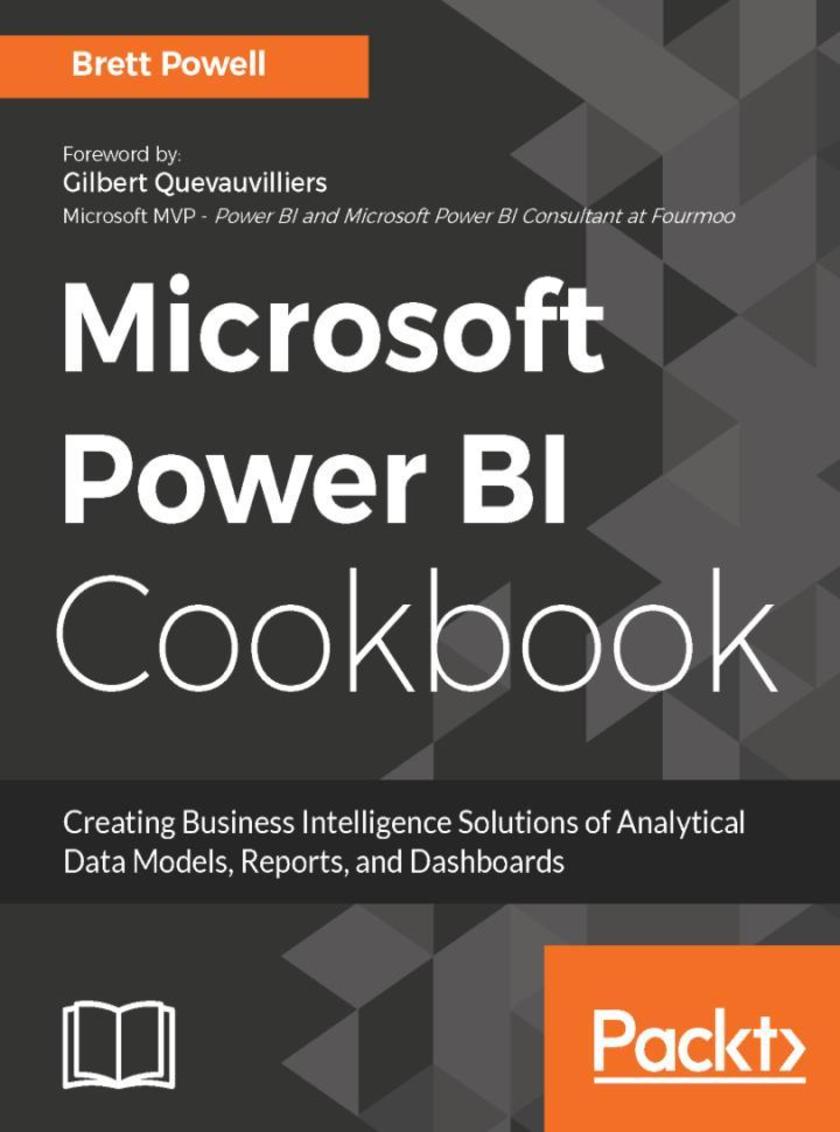
Microsoft Power BI Cookbook
¥107.90
Get more out of Microsoft Power BI turning your data into actionable insights About This Book ? From connecting to your data sources to developing and deploying immersive, mobile-ready dashboards and visualizations, this book covers it all ? Over 90 hands-on, technical recipes, tips, and use cases from across the Power BI platform including the Power BI Service and Mobile Applications ? Proven development techniques and guidance for implementing custom solutions with DAX and M languages Who This Book Is For This book is for BI professionals who wish to enhance their knowledge of Power BI beyond and to enhance the value of the Power BI solutions they deliver to business users. Those who are looking at quick solutions to common problems while using Power BI will also find this book to be a very useful resource .Some experience with Power BI will be useful. What You Will Learn ? Cleanse, stage, and integrate your data sources with Power BI ? Abstract data complexities and provide users with intuitive, self-service BI capabilities ? Build business logic and analysis into your solutions via the DAX programming language and dynamic, dashboard-ready calculations ? Take advantage of the analytics and predictive capabilities of Power BI ? Make your solutions more dynamic and user specific and/or defined including use cases of parameters, functions, and row level security ? Understand the differences and implications of DirectQuery, Live Connections, and Import-Mode Power BI datasets and how to deploy content to the Power BI Service and schedule refreshes ? Integrate other Microsoft data tools such as Excel and SQL Server Reporting Services into your Power BI solution In Detail Microsoft Power BI is a business intelligence and analytics platform consisting of applications and services designed to provide coherent, visual and interactive insights of data. This book will provide thorough, technical examples of using all primary Power BI tools and features as well as demonstrate high impact end-to-end solutions that leverage and integrate these technologies and services. Get familiar with Power BI development tools and services, go deep into the data connectivity and transformation, modeling, visualization and analytical capabilities of Power BI, and see Power BI’s functional programming languages of DAX and M come alive to deliver powerful solutions to address common, challenging scenarios in business intelligence. This book will excite and empower you to get more out of Power BI via detailed recipes, advanced design and development tips, and guidance on enhancing existing Power BI projects. Style and approach This book consists of practical recipes on Power BI that target novices as well as intermediate Power BI users. It goes deep into the technical issues, covers additional protocols, and many more real-live examples.
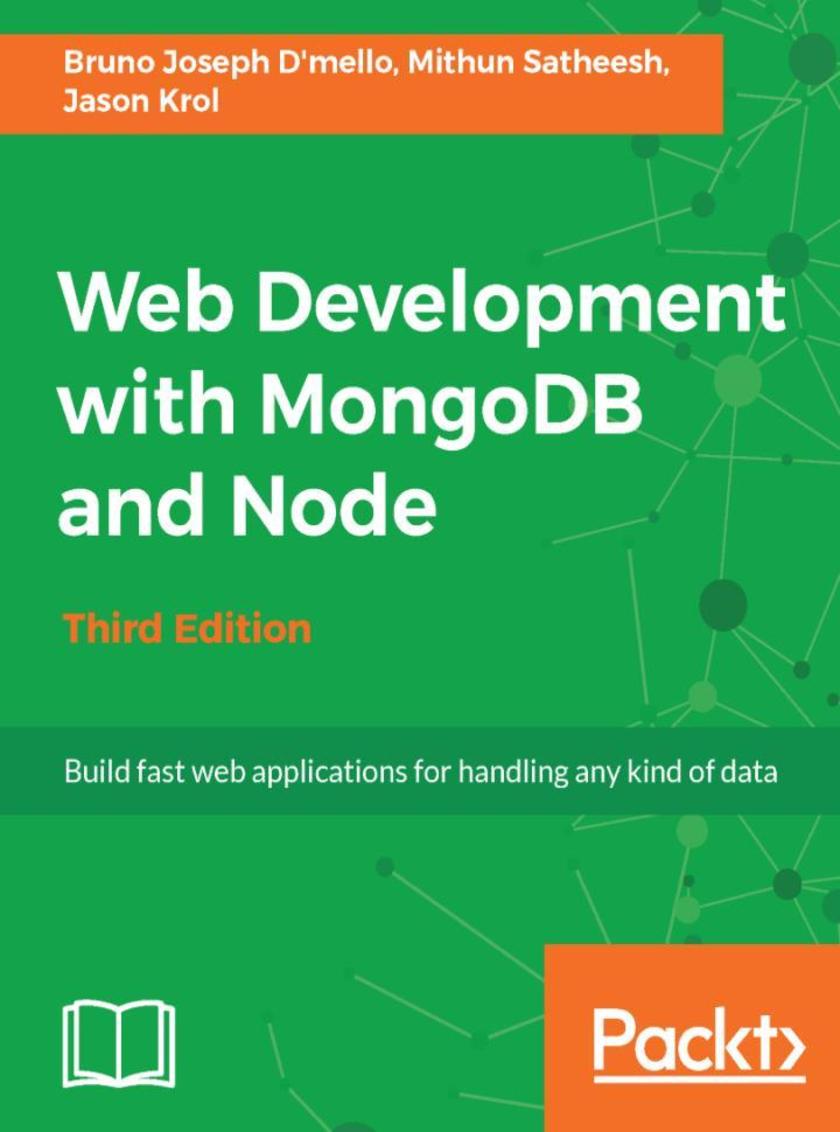
Web Development with MongoDB and Node - Third Edition
¥71.93
Use the two popular web development stacks, Node.js and MongoDB, to build full-featured web applications About This Book ? Learn the new ECMAScript along with Node 8 and MongoDB to make your application more effective. ? Get the up-to-date information required to launch your first application prototype using the latest versions of Node.js and MongoDB. ? A practical guide with clear instructions to designing and developing a complete web application from start to finish using trending frameworks such as angular4 and hapi Who This Book Is For The book is designed for JavaScript developers of any skill level who want to get up-and-running using Node.js and MongoDB to build full-featured web applications. A basic understanding of JavaScript and HTML is the only prerequisite for this book. What You Will Learn ? Work with Node.js building blocks ? Write and configure a web server using Node.js powered by the Express.js framework ? Build dynamic HTML pages using the Handlebars template engine ? Persist application data using MongoDB and Mongoose ODM ? Test your code using automated testing tools such as the Mocha framework ? Automate test cases using Gulp ? Reduce your web development time by integrating third-party tools for web interaction. ? Deploy a development environment to the cloud using services such as Heroku, Amazon Web Services, and Microsoft Azure ? Explore single-page application frameworks to take your web applications to the next level In Detail Node.js builds fast, scalable network applications while MongoDB is the perfect fit as a high-performance, open source NoSQL database solution. The combination of these two technologies offers high performance and scalability and helps in building fast, scalable network applications. Together they provide the power for manage any form of data as well as speed of delivery. This book will help you to get these two technologies working together to build web applications quickly and easily, with effortless deployment to the cloud. You will also learn about angular 4, which consumes pure JSON APOIs from a hapi server. The book begins by setting up your development environment, running you through the steps necessary to get the main application server up-and-running. Then you will see how to use Node.js to connect to a MongoDB database and perform data manipulations. From here on, the book will take you through integration with third-party tools to interact with web apps. You will see how to use controllers and view models to generate reusable code that will reduce development time. Toward the end, the book supplies tests to properly execute your code and take your skills to the next level with the most popular frameworks for developing web applications. By the end of the book, you will have a running web application developed with MongoDB, Node.js, and some of the most powerful and popular frameworks. Style and approach A practical guide with clear instructions to designing and developing a complete web application from start to finish
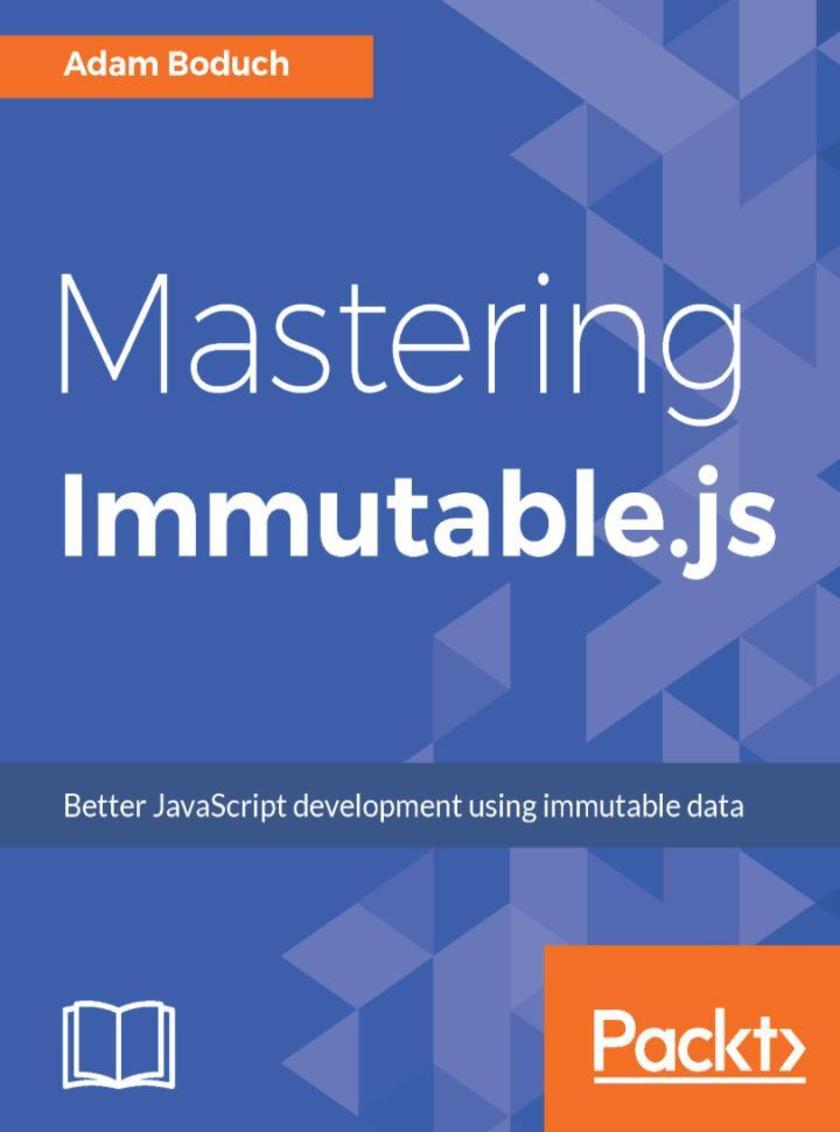
Mastering Immutable.js
¥71.93
This book shows JavaScript developers how to build highly dependable JavaScript projects using the Immutable.js framework. About This Book ? Master the Immutable.js JavaScript framework ? Build predictable and dependable applications using immutability ? Control how data flows through your application ? Control the effects of data flow in your user interface using Node.js Who This Book Is For This book is for JavaScript developers, from intermediate level and beyond, who need to create dependable JavaScript projects, using the Immutable.js JavaScript framework. What You Will Learn ? Learn how Immutable.js can improve the dependability of your JavaScript code ? Discover how to create Immutable data, and work with persistent changes ? See how to combine and filter collections, and find items ? Learn how to work with sequences and side effects ? Sort collections, maps, and sets ? Get to know tricks to avoid processing chains ? Compare and move between lists, sets, and maps ? Work with Immutable patterns and Immutable architecture In Detail Immutable.js is a JavaScript library that will improve the robustness and dependability of your larger JavaScript projects. All aspects of the Immutable.js framework are covered in this book, and common JavaScript situations are examined in a hands-on way so that you gain practical experience using Immutable.js that you can apply across your own JavaScript projects. The key to building robust JavaScript applications using immutability is to control how data flows through your application, and how the side-effects of these flows are managed. Many problems that are difficult to pinpoint in large codebases stem from data that’s been mutated where it shouldn’t have been. With immutable data, you rule out an entire class of bugs. Mastering Immutable.js takes a practical, hands-on approach throughout, and shows you the ins and outs of the Immutable.js framework so that you can confidently build successful and dependable JavaScript projects. Style and Approach Adam Boduch covers all the key concepts and benefits of immutability, and then presents you with hands-on practical experience on implementing immutability in your JavaScript projects.

AWS Certified Developer - Associate Guide
¥90.46
An effective guide to becoming an AWS Certified Developer About This Book ? This fast-paced guide will help you clear the exam with confidence ? Learn to design, develop, and deploy cloud-based solutions using AWS ? Enhance your AWS skills with practice questions and mock tests Who This Book Is For This book is for IT professionals and developers looking to clear the AWS Certified Developer – Associate 2017 exam. Developers looking to develop and manage their applications on the AWS platform will also find this book useful. No prior AWS experience is needed. What You Will Learn ? Create and manage users, groups, and permissions using AWS Identity and Access Management services ? Create a secured Virtual Private Cloud (VPC) with Public and Private Subnets, Network Access Control, and Security groups ? Get started with Elastic Compute Cloud (EC2), launching your first EC2 instance, and working with it ? Handle application traffic with Elastic Load Balancing (ELB) and monitor AWS resources with CloudWatch ? Work with AWS storage services such as Simple Storage Service (S3), Glacier, and CloudFront ? Get acquainted with AWS DynamoDB – a NoSQL database service ? Coordinate work across distributed application components using Simple Workflow Service (SWF) In Detail AWS Certified Developer - Associate Guide starts with a quick introduction to AWS and the prerequisites to get you started. Then, this book gives you a fair understanding of core AWS services and basic architecture. Next, this book will describe about getting familiar with Identity and Access Management (IAM) along with Virtual private cloud (VPC). Moving ahead you will learn about Elastic Compute cloud (EC2) and handling application traffic with Elastic Load Balancing (ELB). Going ahead you we will talk about Monitoring with CloudWatch, Simple storage service (S3) and Glacier and CloudFront along with other AWS storage options. Next we will take you through AWS DynamoDB – A NoSQL Database Service, Amazon Simple Queue Service (SQS) and CloudFormation Overview. Finally, this book covers understanding Elastic Beanstalk and overview of AWS lambda. At the end of this book, we will cover enough topics, tips and tricks along with mock tests for you to be able to pass the AWS Certified Developer - Associate exam and develop as well as manage your applications on the AWS platform. Style and approach This step-by-step guide includes exercises and mock tests to clear the AWS certification exam and become a successful AWS developer.
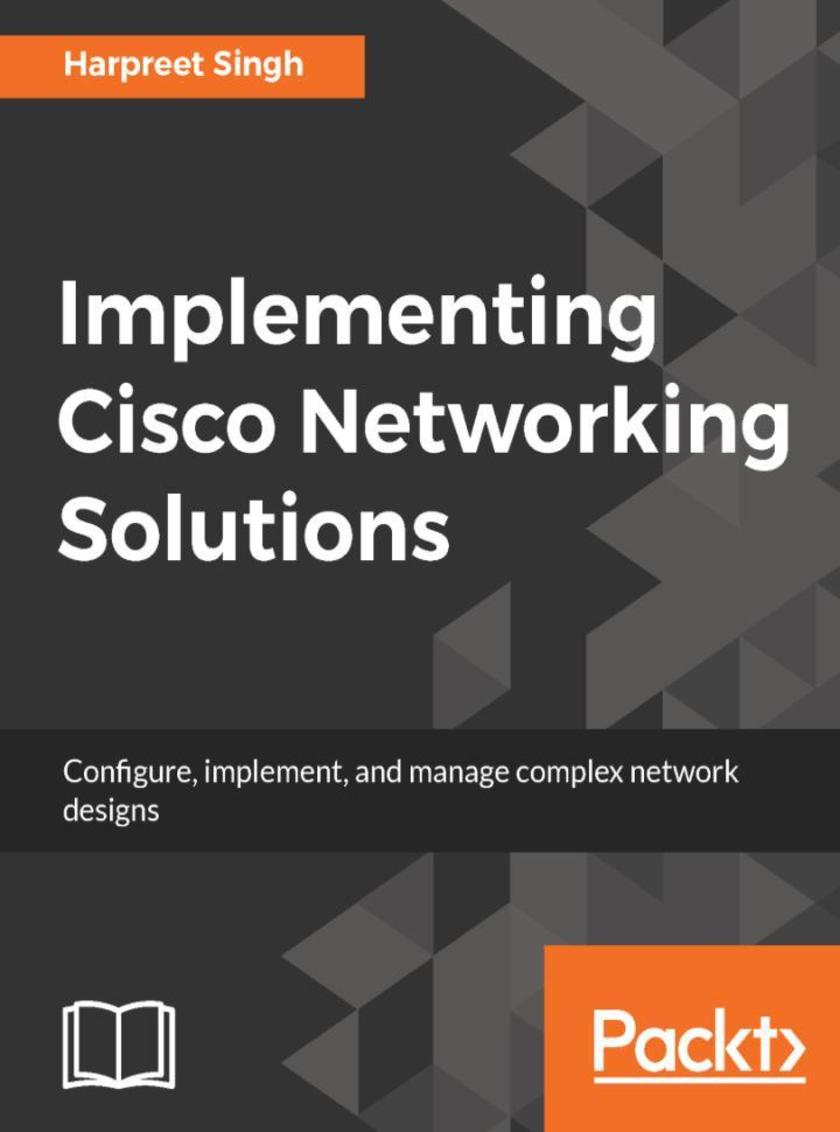
Implementing Cisco Networking Solutions
¥80.65
Learn the art of designing, implementing, and managing Cisco's networking solutions on datacenters, wirelessly, security and mobility to set up an Enterprise network. About This Book ? Implement Cisco's networking solutions on datacenters and wirelessly, Cloud, Security, and Mobility ? Leverage Cisco IOS to manage network infrastructures. ? A practical guide that will show how to troubleshoot common issues on the network. Who This Book Is For This book is targeted at network designers and IT engineers who are involved in designing, configuring, and operating enterprise networks, and are in taking decisions to make the necessary network changes to meet newer business needs such as evaluating new technology choices, enterprise growth, and adding new services on the network. The reader is expected to have a general understanding of the fundamentals of networking, including the OSI stack and IP addressing. What You Will Learn ? Understand the network lifecycle approach ? Get to know what makes a good network design ? Design components and technology choices at various places in the network (PINS) ? Work on sample configurations for network devices in the LAN/ WAN/ DC, and the wireless domain ? Get familiar with the configurations and best practices for securing the network ? Explore best practices for network operations In Detail Most enterprises use Cisco networking equipment to design and implement their networks. However, some networks outperform networks in other enterprises in terms of performance and meeting new business demands, because they were designed with a visionary approach. The book starts by describing the various stages in the network lifecycle and covers the plan, build, and operate phases. It covers topics that will help network engineers capture requirements, choose the right technology, design and implement the network, and finally manage and operate the network. It divides the overall network into its constituents depending upon functionality, and describe the technologies used and the design considerations for each functional area. The areas covered include the campus wired network, wireless access network, WAN choices, datacenter technologies, and security technologies. It also discusses the need to identify business-critical applications on the network, and how to prioritize these applications by deploying QoS on the network. Each topic provides the technology choices, and the scenario, involved in choosing each technology, and provides configuration guidelines for configuring and implementing solutions in enterprise networks. Style and approach A step-by-step practical guide that ensures you implement Cisco solutions such as enterprise networks, cloud, and data centers, on small-to-large organizations.
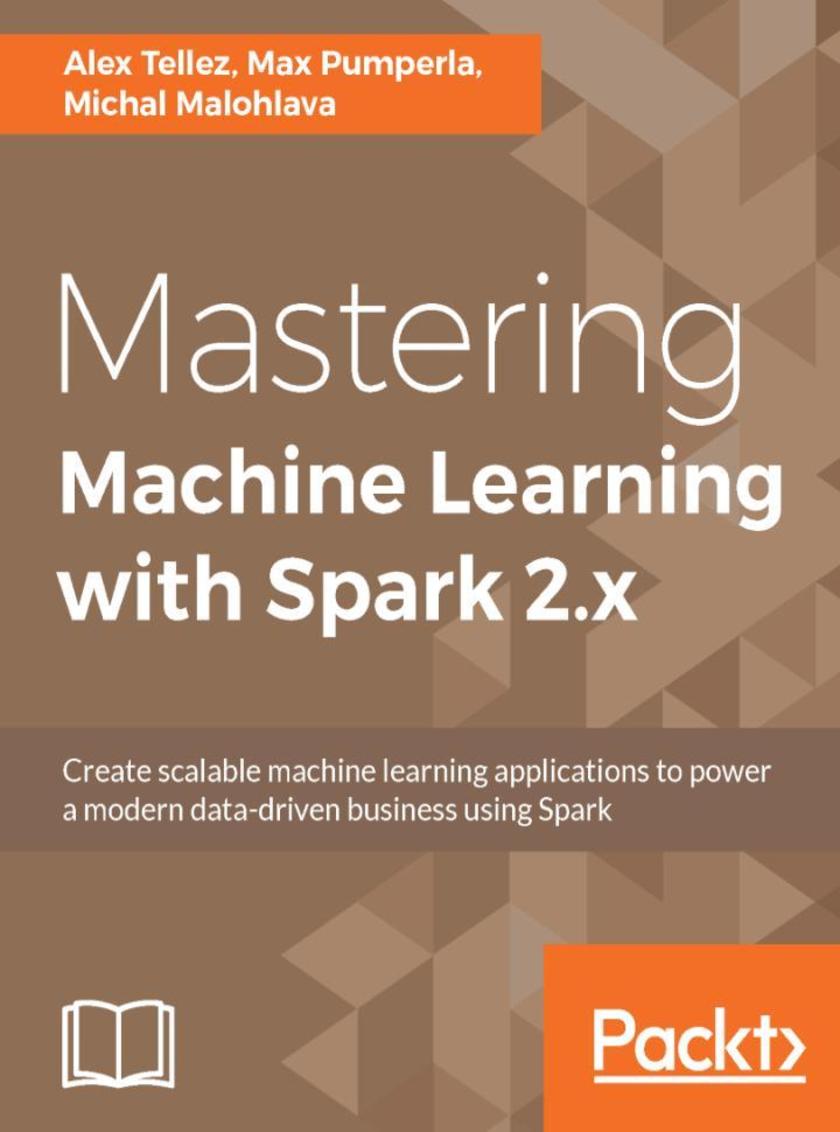
Mastering Machine Learning with Spark 2.x
¥90.46
Unlock the complexities of machine learning algorithms in Spark to generate useful data insights through this data analysis tutorial About This Book ? Process and analyze big data in a distributed and scalable way ? Write sophisticated Spark pipelines that incorporate elaborate extraction ? Build and use regression models to predict flight delays Who This Book Is For Are you a developer with a background in machine learning and statistics who is feeling limited by the current slow and “small data” machine learning tools? Then this is the book for you! In this book, you will create scalable machine learning applications to power a modern data-driven business using Spark. We assume that you already know the machine learning concepts and algorithms and have Spark up and running (whether on a cluster or locally) and have a basic knowledge of the various libraries contained in Spark. What You Will Learn ? Use Spark streams to cluster tweets online ? Run the PageRank algorithm to compute user influence ? Perform complex manipulation of DataFrames using Spark ? Define Spark pipelines to compose individual data transformations ? Utilize generated models for off-line/on-line prediction ? Transfer the learning from an ensemble to a simpler Neural Network ? Understand basic graph properties and important graph operations ? Use GraphFrames, an extension of DataFrames to graphs, to study graphs using an elegant query language ? Use K-means algorithm to cluster movie reviews dataset In Detail The purpose of machine learning is to build systems that learn from data. Being able to understand trends and patterns in complex data is critical to success; it is one of the key strategies to unlock growth in the challenging contemporary marketplace today. With the meteoric rise of machine learning, developers are now keen on finding out how can they make their Spark applications smarter. This book gives you access to transform data into actionable knowledge. The book commences by defining machine learning primitives by the MLlib and H2O libraries. You will learn how to use Binary classification to detect the Higgs Boson particle in the huge amount of data produced by CERN particle collider and classify daily health activities using ensemble Methods for Multi-Class Classification. Next, you will solve a typical regression problem involving flight delay predictions and write sophisticated Spark pipelines. You will analyze Twitter data with help of the doc2vec algorithm and K-means clustering. Finally, you will build different pattern mining models using MLlib, perform complex manipulation of DataFrames using Spark and Spark SQL, and deploy your app in a Spark streaming environment. Style and approach This book takes a practical approach to help you get to grips with using Spark for analytics and to implement machine learning algorithms. We'll teach you about advanced applications of machine learning through illustrative examples. These examples will equip you to harness the potential of machine learning, through Spark, in a variety of enterprise-grade systems.
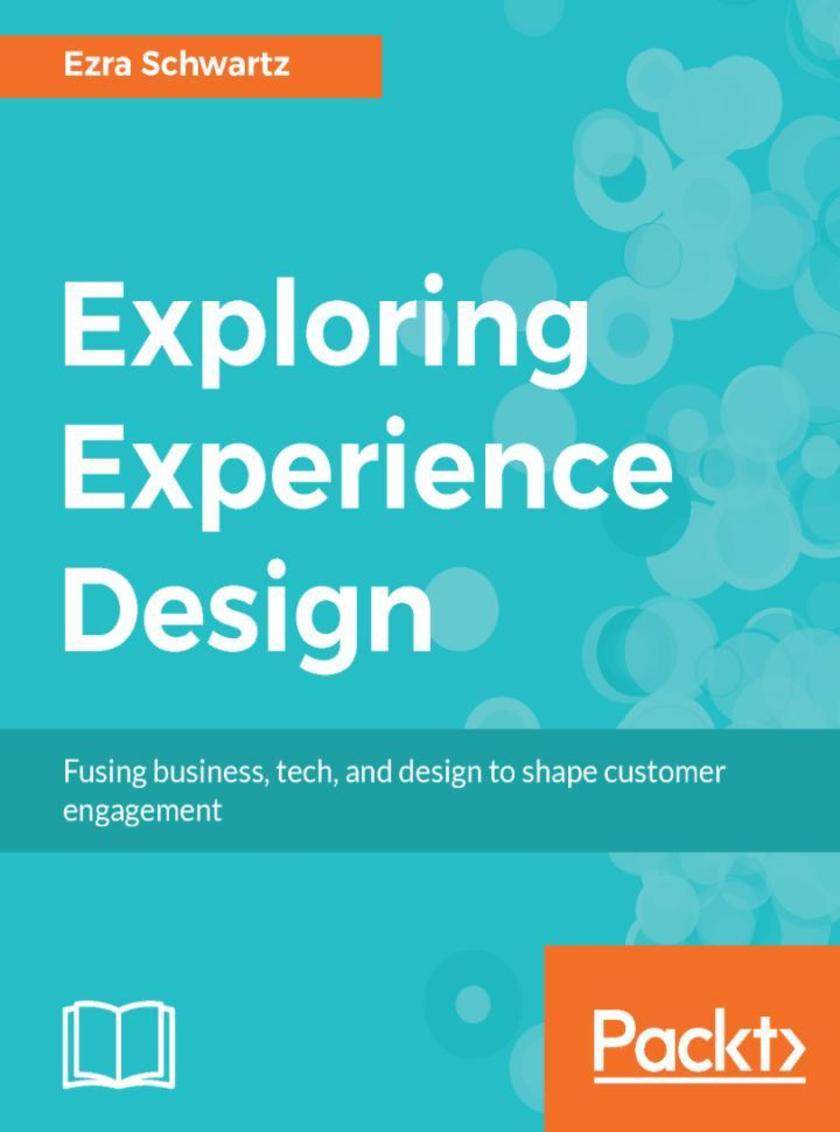
Exploring Experience Design
¥71.93
Learn how to unify Customer Experience, User Experience and more to shape lasting customer engagement in a world of rapid change. About This Book ? An introductory guide to Experience Design that will help you break into XD as a career by gaining A strong foundational knowledge ? Get acquainted with the various phases of a typical Experience Design workflow ? Work through the key process and techniques in XD, supported by most of the common use cases Who This Book Is For This book is for designers who wish to enter the field of UX Design, especially Programmers, Content Strategists, and Organizations keen to understand the core concepts of UX Design. What You Will Learn ? Understand why Experience Design (XD) is at the forefront of business priorities, as organizations race to innovate products and services in order to compete for customers in a global economy driven by technology and change ? Get motivated by the numerous professional opportunities that XD opens up for practitioners in wide-ranging domains, and by the stories of real XD practitioners ? Understand what experience is, how experiences are designed, and why they are effective ? Gain knowledge of user-centered design principles, methodologies, and best practices that will improve your product (digital or physical) ? Get to know your X’s and D’s—understand the differences between XD and UX, CX, IxD, IA, SD, VD, PD, and other design practices In Detail We live in an experience economy in which interaction with products is valued more than owning them. Products are expected to engage and delight in order to form the emotional bonds that forge long-term customer loyalty: Products need to anticipate our needs and perform tasks for us: refrigerators order food, homes monitor energy, and cars drive autonomously; they track our vitals, sleep, location, finances, interactions, and content use; recognize our biometric signatures, chat with us, understand and motivate us. Beautiful and easy to use, products have to be fully customizable to match our personal preferences. Accomplishing these feats is easier said than done, but a solution has emerged in the form of Experience design (XD), the unifying approach to fusing business, technology and design around a user-centered philosophy. This book explores key dimensions of XD: Close collaboration among interdisciplinary teams, rapid iteration and ongoing user validation. We cover the processes, methodologies, tools, techniques and best-practices practitioners use throughout the entire product development life-cycle, as ideas are transformed to into positive experiences which lead to perpetual customer engagement and brand loyalty. Style and approach An easy-to-understand guide, filled with real-world use cases on process, design, and techniques, helping you build a strong foundation in Experience Design.
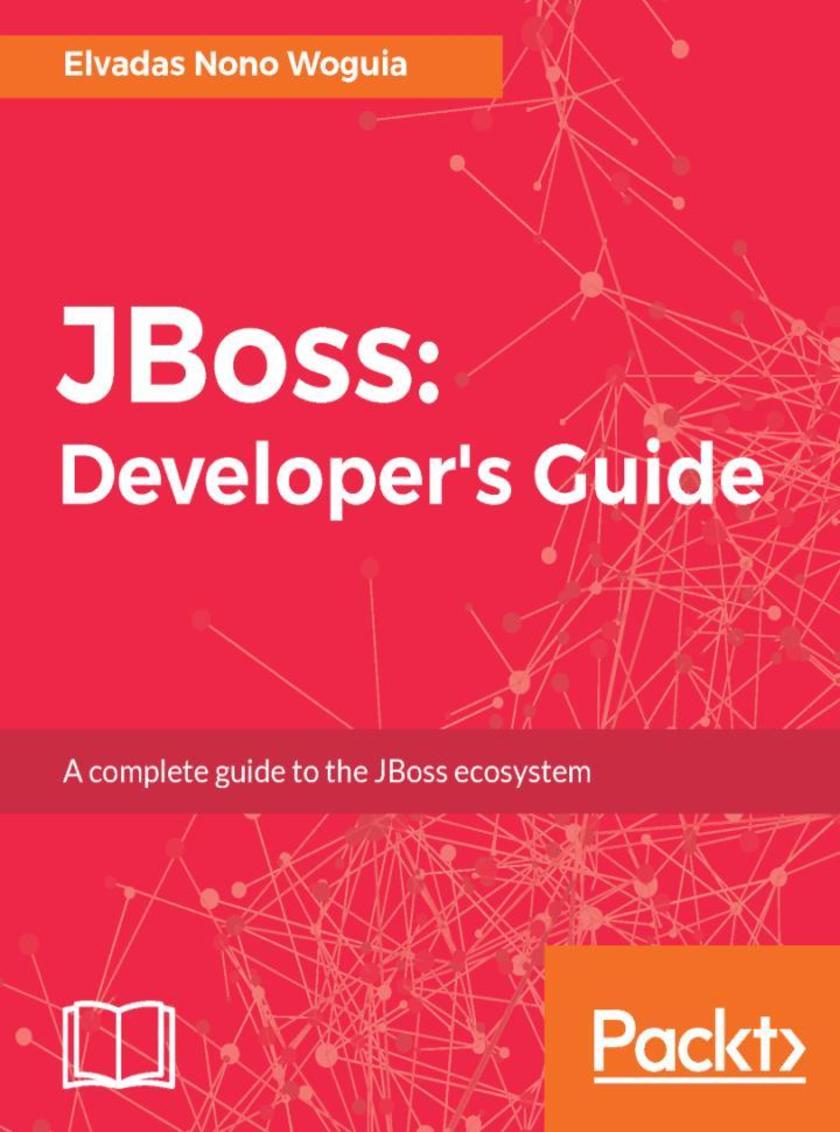
JBoss: Developer's Guide
¥80.65
Build your own enterprise applications and integration flows with JBoss and its products About This Book ? Build fast, smart, and flexible applications using JBoss ? Couple one or more JBoss products to effectively solve various business problems ? Explore the JBoss product ecosystem for improving the performance of your projects Who This Book Is For If you are a Java developer who wants to have a complete view of the JBoss ecosystem or quickly explore a specific JBoss Product, then this is the book you want. Integrators and consultants, familiar with JBoss, who want integrate several JBoss products within their ongoing project will also find this book useful. What You Will Learn ? Create new applications or integrate existing systems with JBoss products ? Setup and manage a JBoss domain ? Setup and manage a JBoss Fuse cluster with Fabric and Apache Karaf ? Create and deploy OSGi applications on JBoss Fuse containers ? Manage enterprise data with JBoss Datagrid ? Aggregate various data sources with JBoss Data virtualization to offer data as a service ? Optimize your business and workflows with both JBoss Business RulesManagement System and JBoss Business Process Management platforms. In Detail Have you often wondered what is the best JBoss product to solve a specific problem? Do you want to get started with a specific JBoss product and know how to integrate different JBoss products in your IT Systems? Then this is the book for you. Through hands-on examples from the business world, this guide presents details on the major products and how you can build your own Enterprise services around the JBoss ecosystem. Starting with an introduction to the JBoss ecosystem, you will gradually move on to developing and deploying clustered application on JBoss Application Server, and setting up high availability using undertow or HA proxy loadbalancers. As you are moving to a micro service archicture, you will be taught how to package existing Java EE applications as micro service using Swarm or create your new micro services from scratch by coupling most popular Java EE frameworks like JPA, CDI with Undertow handlers. Next, you will install and configure JBoss Data grid in development and production environments, develop cache based applications and aggregate various data source in JBoss data virtualization. You will learn to build, deploy, and monitor integration scenarios using JBoss Fuse and run both producers/consumers applications relying on JBoss AMQ. Finally, you will learn to develop and run business workflows and make better decisions in your applications using Drools and Jboss BPM Suite Platform. Style and Approach The book works through the major JBoss products, with examples and instructions to help you understand each product and how they work together.
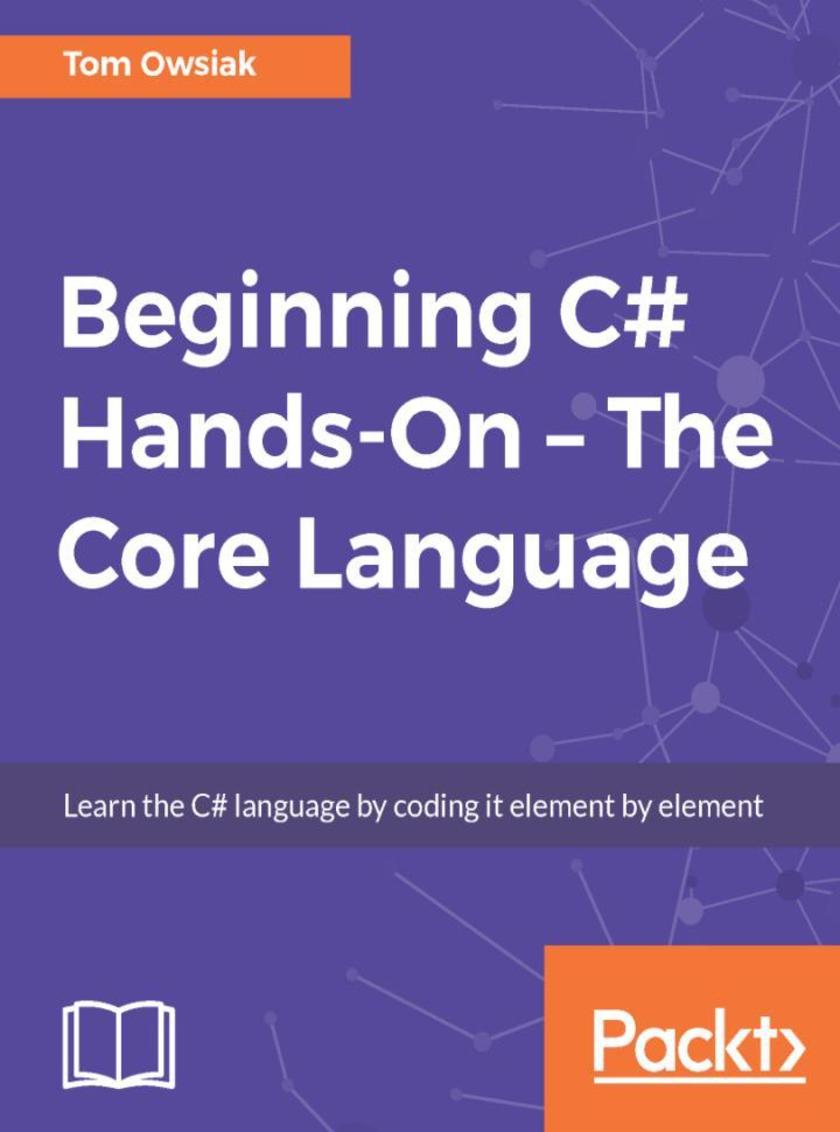
Beginning C# Hands-On - The Core Language
¥71.93
A C# beginners guide to the core parts of the C# language! About This Book ? Learn C#, Visual Studio, and Object Oriented Programming ? See practical examples of all the core C# language features so that you can easily master them yourself ? Use the C# programming language to work with code and data, which can be applied to other programming languages as well ? Complete a variety of programming assignments for hands-on practice, as you move through the course Who This Book Is For This book will appeal to anyone who is interested in learning how to program in C#. Previous programming experience will help you get through the initial sections with ease, although, it’s not mandatory to possess any experience at all. What You Will Learn ? Learn C#, Visual Studio, and object-oriented programming ? Learn all the core C# language syntax with hands-on working examples ? Learn everything from basic variable assignments to complex multidimensional arrays ? Go through practical examples of all the core C# language features so that you can easily master them yourself ? Use the C# programming language to work with code and data, which can be applied to other programming languages as well In Detail Beginning C# Hands-On - The Core Language teaches you core C# language and syntax in a working Visual Studio environment. This book covers everything from core language through to more advanced features such as object-oriented programming techniques. This book is for C# beginners who need a practical reference to core C# language features. You'll also gain a view of C# through web programming with web forms, so you'll learn HTML, basic CSS, and how to use a variety of controls, such as buttons and drop-down lists. You'll start with the fundamentals of C# and Visual Studio, including defining variables, interacting with users, and understanding data types, data conversions, and constants. You'll move on to checking conditions using if/else blocks, and see how to use loops to do things such as repeat blocks of code. After covering various operators to evaluate and assign control structures, you'll see how to use arrays to store collections of data. By the time you’ve finished the book, you’ll know how to program the vital elements of the core C# language. These are the building blocks that you can then combine to build complex C# programs. Style and approach A comprehensive book that blends theory with just the right amount of practical code implementations, to help you get up and running with the C# programming language. You’ll also get to work with other tools and technologies that complement C# programming. Each core part of the C# language is coded as you learn, and code output is tested every time to verify the syntax is working as expected, so it’s easy for you to learn directly from the working code examples.
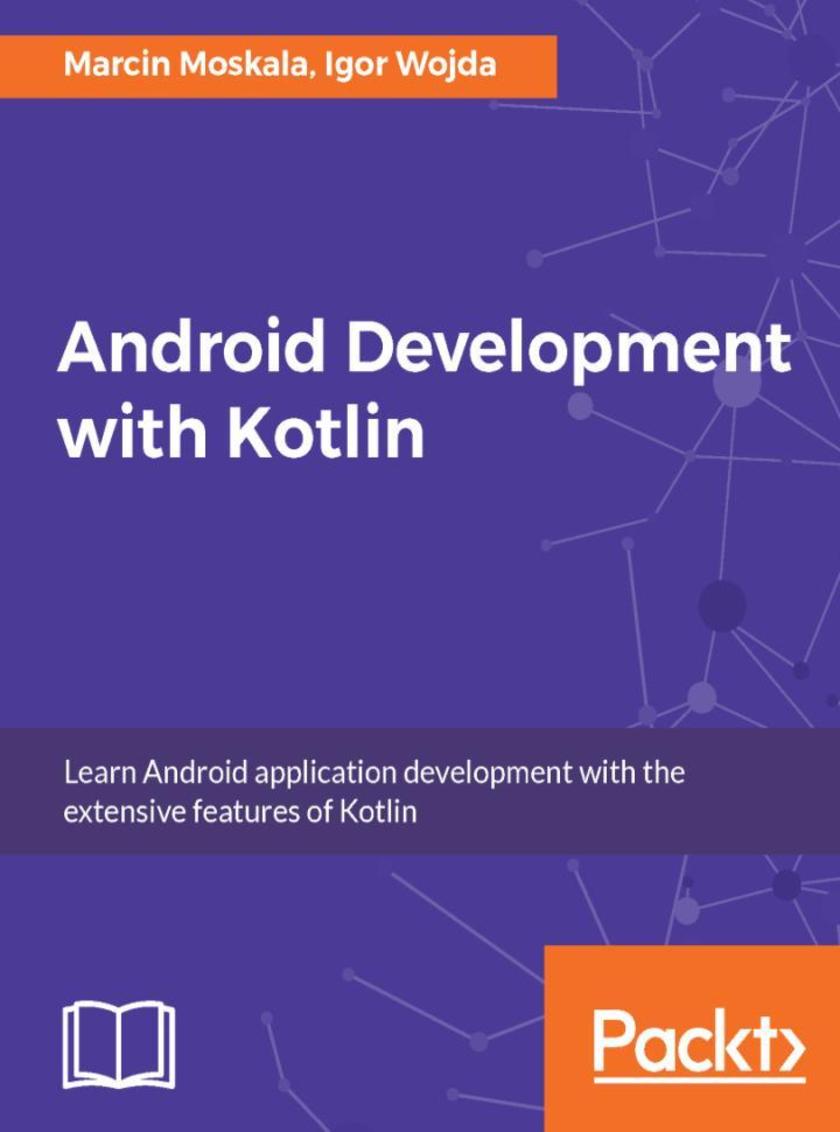
Android Development with Kotlin
¥80.65
Learn how to make Android development much faster using a variety of Kotlin features, from basics to advanced, to write better quality code. About This Book ? Leverage specific features of Kotlin to ease Android application development ? Write code based on both object oriented and functional programming to build robust applications ? Filled with various practical examples so you can easily apply your knowledge to real world scenarios ? Identify the improved way of dealing with common Java patterns Who This Book Is For This book is for developers who have a basic understanding of Java language and have 6-12 months of experience with Android development and developers who feel comfortable with OOP concepts. What You Will Learn ? Run a Kotlin application and understand the integration with Android Studio ? Incorporate Kotlin into new/existing Android Java based project ? Learn about Kotlin type system to deal with null safety and immutability ? Define various types of classes and deal with properties ? Define collections and transform them in functional way ? Define extensions, new behaviours to existing libraries and Android framework classes ? Use generic type variance modifiers to define subtyping relationship between generic types ? Build a sample application In Detail Nowadays, improved application development does not just mean building better performing applications. It has become crucial to find improved ways of writing code. Kotlin is a language that helps developers build amazing Android applications easily and effectively. This book discusses Kotlin features in context of Android development. It demonstrates how common examples that are typical for Android development, can be simplified using Kotlin. It also shows all the benefits, improvements and new possibilities provided by this language. The book is divided in three modules that show the power of Kotlin and teach you how to use it properly. Each module present features in different levels of advancement. The first module covers Kotlin basics. This module will lay a firm foundation for the rest of the chapters so you are able to read and understand most of the Kotlin code. The next module dives deeper into the building blocks of Kotlin, such as functions, classes, and function types. You will learn how Kotlin brings many improvements to the table by improving common Java concepts and decreasing code verbosity. The last module presents features that are not present in Java. You will learn how certain tasks can be achieved in simpler ways thanks to Kotlin. Through the book, you will learn how to use Kotlin for Android development. You will get to know and understand most important Kotlin features, and how they can be used. You will be ready to start your own adventure with Android development with Kotlin. Style and approach A step-by-step guide that is filled with numerous real-world examples.
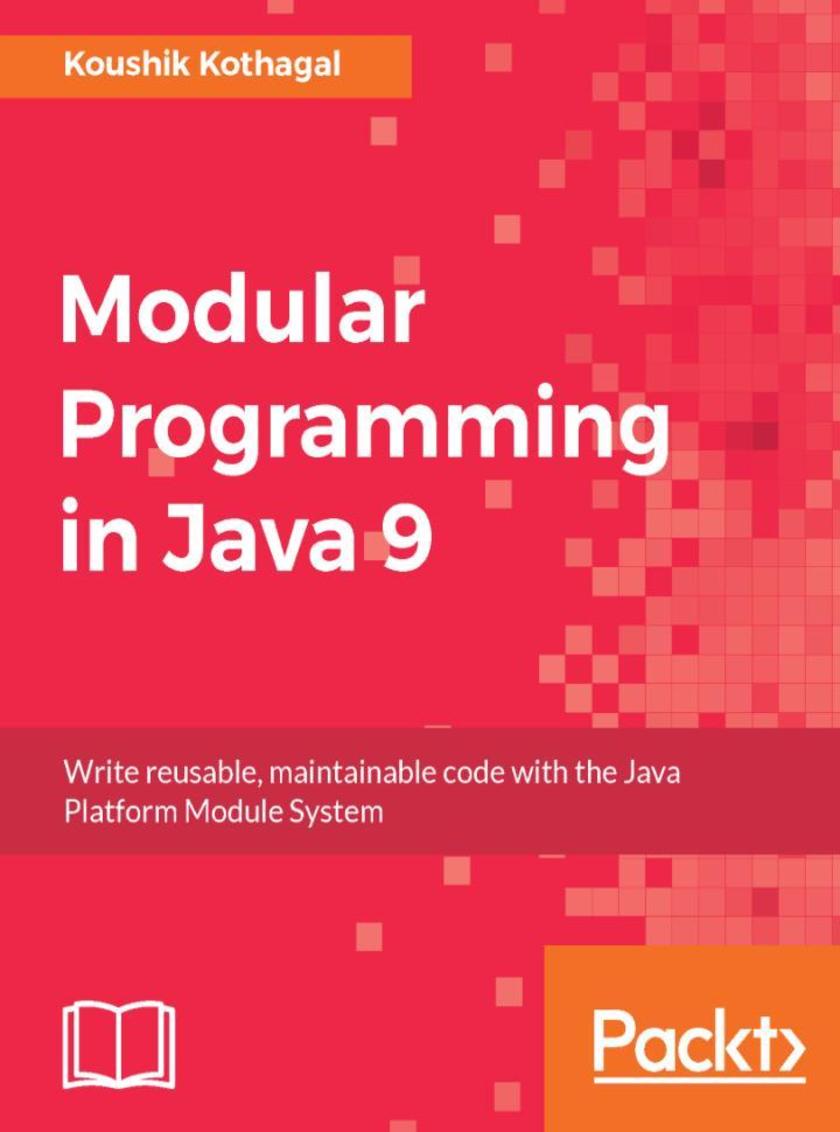
Modular Programming in Java 9
¥63.21
Kick-start your modular programming journey and gear up for the future of Java development About This Book ? Master design patterns and best practices to build truly modular applications in Java 9 ? Upgrade your old Java code to Java 9 with ease ? Build and run a smooth functioning multi-module application. Who This Book Is For This book is written for Java developers who are interested in learning and understanding the techniques and best practices to build modular applications in Java. The book assumes some previous programming experience in Java 8 or earlier, familiarity with the basic Java types such as classes and interfaces, as well as experience in compiling and executing Java programs. What You Will Learn ? Get introduced to the concept of modules and modular programming by working on a fully modular Java application ? Build and configure your own Java 9 modules ? Work with multiple modules and establish inter-module dependencies ? Understand and use the principles of encapsulation, readability, and accessibility ? Use jlink to generate fully loaded custom runtime images like a pro ? Discover the best practices to help you write awesome modules that are a joy to use and maintain ? Upgrade your old Java code to use the new Java 9 module system In Detail The Java 9 module system is an important addition to the language that affects the way we design, write, and organize code and libraries in Java. It provides a new way to achieve maintainable code by the encapsulation of Java types, as well as a way to write better libraries that have clear interfaces. Effectively using the module system requires an understanding of how modules work and what the best practices of creating modules are. This book will give you step-by-step instructions to create new modules as well as migrate code from earlier versions of Java to the Java 9 module system. You'll be working on a fully modular sample application and add features to it as you learn about Java modules. You'll learn how to create module definitions, setup inter-module dependencies, and use the built-in modules from the modular JDK. You will also learn about module resolution and how to use jlink to generate custom runtime images. We will end our journey by taking a look at the road ahead. You will learn some powerful best practices that will help you as you start building modular applications. You will also learn how to upgrade an existing Java 8 codebase to Java 9, handle issues with libraries, and how to test Java 9 applications. Style and Approach The book is a step-by-step guide to understanding Modularity and building a complete application using a modular design.
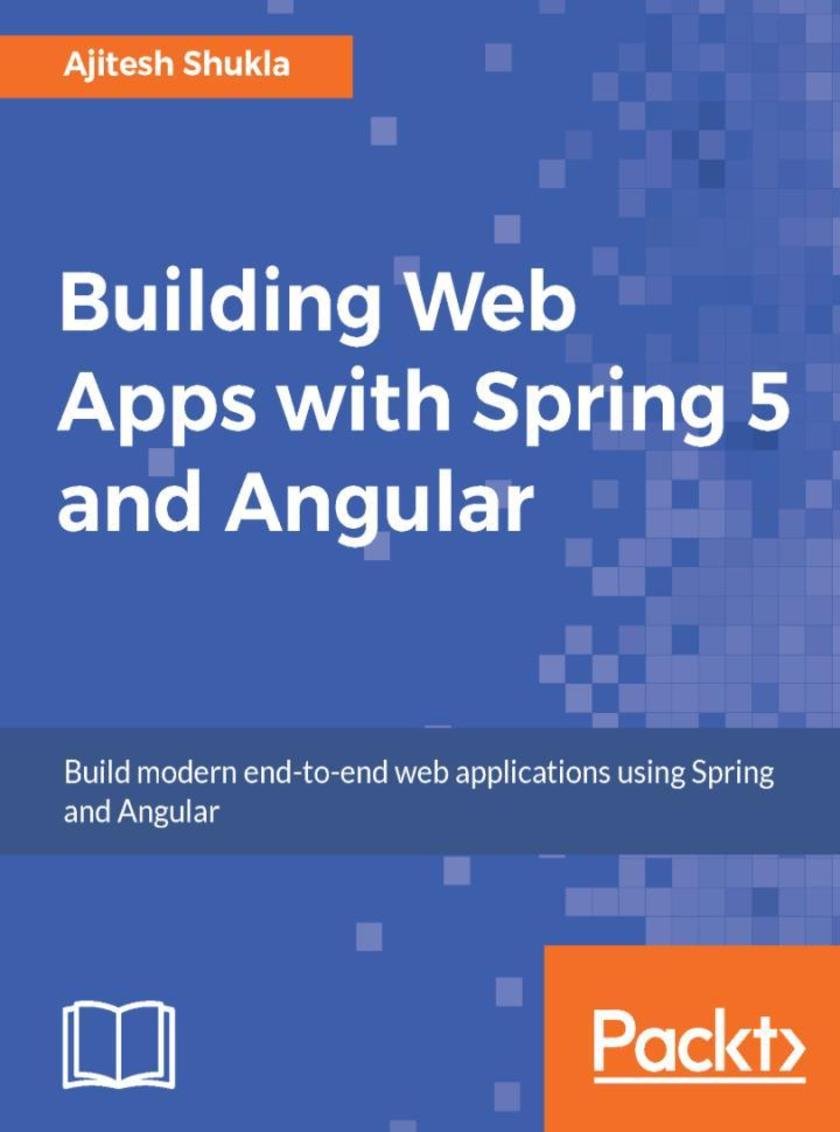
Building Web Apps with Spring 5 and Angular
¥90.46
A complete guide to build robust and scalable web applications with Spring and Angular. About This Book ? This hands on guide will teach you how to build an end-to-end modern web application using Spring and Angular. ? It is easy to read and will benefit Java developers who have been used to develop the back-end part of web application while front-end (UI) has been left for UI developers. ? Learn the core aspects involved in developing the backend and the UI, right from designing to integrating and deploying. Who This Book Is For This book is targeted towards Java Web Developers with a basic knowledge of Spring who want to build complete web applications in a fast and effective way. They will want to gain a stronghold on both frontend and backend development to advance in their careers. What You Will Learn ? Set up development environment for Spring Web App and Angular app. ? Process web request and response and build REST API endpoints. ? Create data access components using Spring Web MVC framework and Hibernate ? Use Junit 5 to test your application ? Learn the fundamental concepts around building Angular ? Configure and use Routes and Components. ? Protect Angular app content from common web vulnerabilities and attacks. ? Integrate Angular apps with Spring Boot Web API endpoints ? Deploy the web application based on CI and CD using Jenkins and Docker containers In Detail Spring is the most popular application development framework being adopted by millions of developers around the world to create high performing, easily testable, reusable code. Its lightweight nature and extensibility helps you write robust and highly-scalable server-side web applications. Coupled with the power and efficiency of Angular, creating web applications has never been easier. If you want build end-to-end modern web application using Spring and Angular, then this book is for you. The book directly heads to show you how to create the backend with Spring, showing you how to configure the Spring MVC and handle Web requests. It will take you through the key aspects such as building REST API endpoints, using Hibernate, working with Junit 5 etc. Once you have secured and tested the backend, we will go ahead and start working on the front end with Angular. You will learn about fundamentals of Angular and Type* and create an SPA using components, routing etc. Finally, you will see how to integrate both the applications with REST protocol and deploy the application using tools such as Jenkins and Docker. Style and approach This is a straightforward guide that shows how to build a complete web application in Angular and Spring.
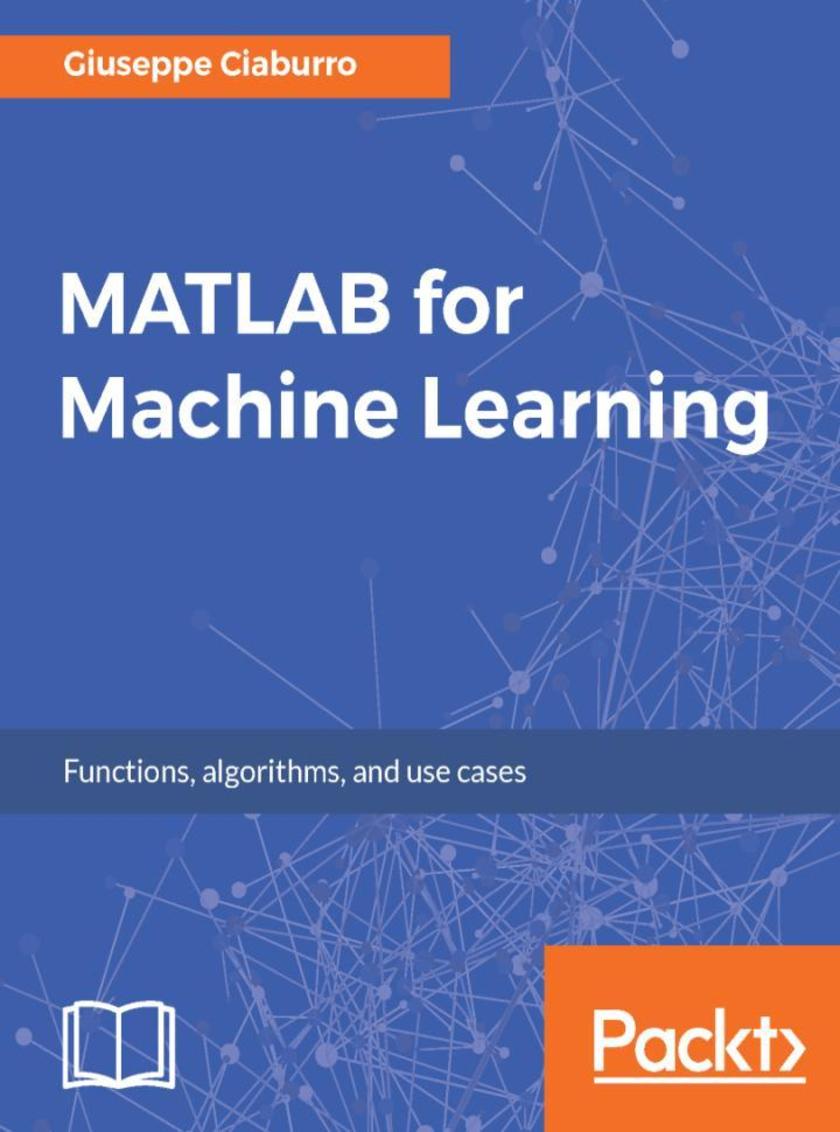
MATLAB for Machine Learning
¥90.46
Extract patterns and knowledge from your data in easy way using MATLAB About This Book ? Get your first steps into machine learning with the help of this easy-to-follow guide ? Learn regression, clustering, classification, predictive analytics, artificial neural networks and more with MATLAB ? Understand how your data works and identify hidden layers in the data with the power of machine learning. Who This Book Is For This book is for data analysts, data scientists, students, or anyone who is looking to get started with machine learning and want to build efficient data processing and predicting applications. A mathematical and statistical background will really help in following this book well. What You Will Learn ? Learn the introductory concepts of machine learning. ? Discover different ways to transform data using SAS XPORT, import and export tools, ? Explore the different types of regression techniques such as simple & multiple linear regression, ordinary least squares estimation, correlations and how to apply them to your data. ? Discover the basics of classification methods and how to implement Naive Bayes algorithm and Decision Trees in the Matlab environment. ? Uncover how to use clustering methods like hierarchical clustering to grouping data using the similarity measures. ? Know how to perform data fitting, pattern recognition, and clustering analysis with the help of MATLAB Neural Network Toolbox. ? Learn feature selection and extraction for dimensionality reduction leading to improved performance. In Detail MATLAB is the language of choice for many researchers and mathematics experts for machine learning. This book will help you build a foundation in machine learning using MATLAB for beginners. You’ll start by getting your system ready with t he MATLAB environment for machine learning and you’ll see how to easily interact with the Matlab workspace. We’ll then move on to data cleansing, mining and analyzing various data types in machine learning and you’ll see how to display data values on a plot. Next, you’ll get to know about the different types of regression techniques and how to apply them to your data using the MATLAB functions. You’ll understand the basic concepts of neural networks and perform data fitting, pattern recognition, and clustering analysis. Finally, you’ll explore feature selection and extraction techniques for dimensionality reduction for performance improvement. At the end of the book, you will learn to put it all together into real-world cases covering major machine learning algorithms and be comfortable in performing machine learning with MATLAB. Style and approach The book takes a very comprehensive approach to enhance your understanding of machine learning using MATLAB. Sufficient real-world examples and use cases are included in the book to help you grasp the concepts quickly and apply them easily in your day-to-day work.
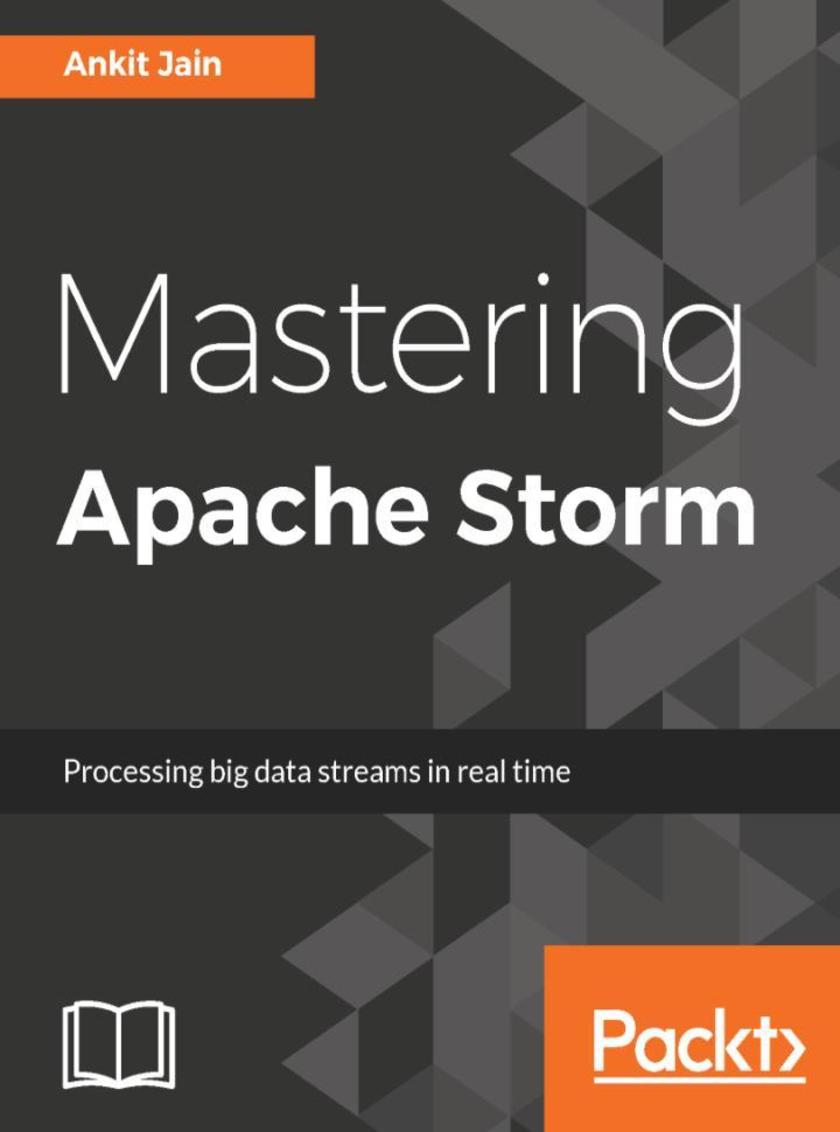
Mastering Apache Storm
¥90.46
Master the intricacies of Apache Storm and develop real-time stream processing applications with ease About This Book ? Exploit the various real-time processing functionalities offered by Apache Storm such as parallelism, data partitioning, and more ? Integrate Storm with other Big Data technologies like Hadoop, HBase, and Apache Kafka ? An easy-to-understand guide to effortlessly create distributed applications with Storm Who This Book Is For If you are a Java developer who wants to enter into the world of real-time stream processing applications using Apache Storm, then this book is for you. No previous experience in Storm is required as this book starts from the basics. After finishing this book, you will be able to develop not-so-complex Storm applications. What You Will Learn ? Understand the core concepts of Apache Storm and real-time processing ? Follow the steps to deploy multiple nodes of Storm Cluster ? Create Trident topologies to support various message-processing semantics ? Make your cluster sharing effective using Storm scheduling ? Integrate Apache Storm with other Big Data technologies such as Hadoop, HBase, Kafka, and more ? Monitor the health of your Storm cluster In Detail Apache Storm is a real-time Big Data processing framework that processes large amounts of data reliably, guaranteeing that every message will be processed. Storm allows you to scale your data as it grows, making it an excellent platform to solve your big data problems. This extensive guide will help you understand right from the basics to the advanced topics of Storm. The book begins with a detailed introduction to real-time processing and where Storm fits in to solve these problems. You’ll get an understanding of deploying Storm on clusters by writing a basic Storm Hello World example. Next we’ll introduce you to Trident and you’ll get a clear understanding of how you can develop and deploy a trident topology. We cover topics such as monitoring, Storm Parallelism, scheduler and log processing, in a very easy to understand manner. You will also learn how to integrate Storm with other well-known Big Data technologies such as HBase, Redis, Kafka, and Hadoop to realize the full potential of Storm. With real-world examples and clear explanations, this book will ensure you will have a thorough mastery of Apache Storm. You will be able to use this knowledge to develop efficient, distributed real-time applications to cater to your business needs. Style and approach This easy-to-follow guide is full of examples and real-world applications to help you get an in-depth understanding of Apache Storm. This book covers the basics thoroughly and also delves into the intermediate and slightly advanced concepts of application development with Apache Storm.
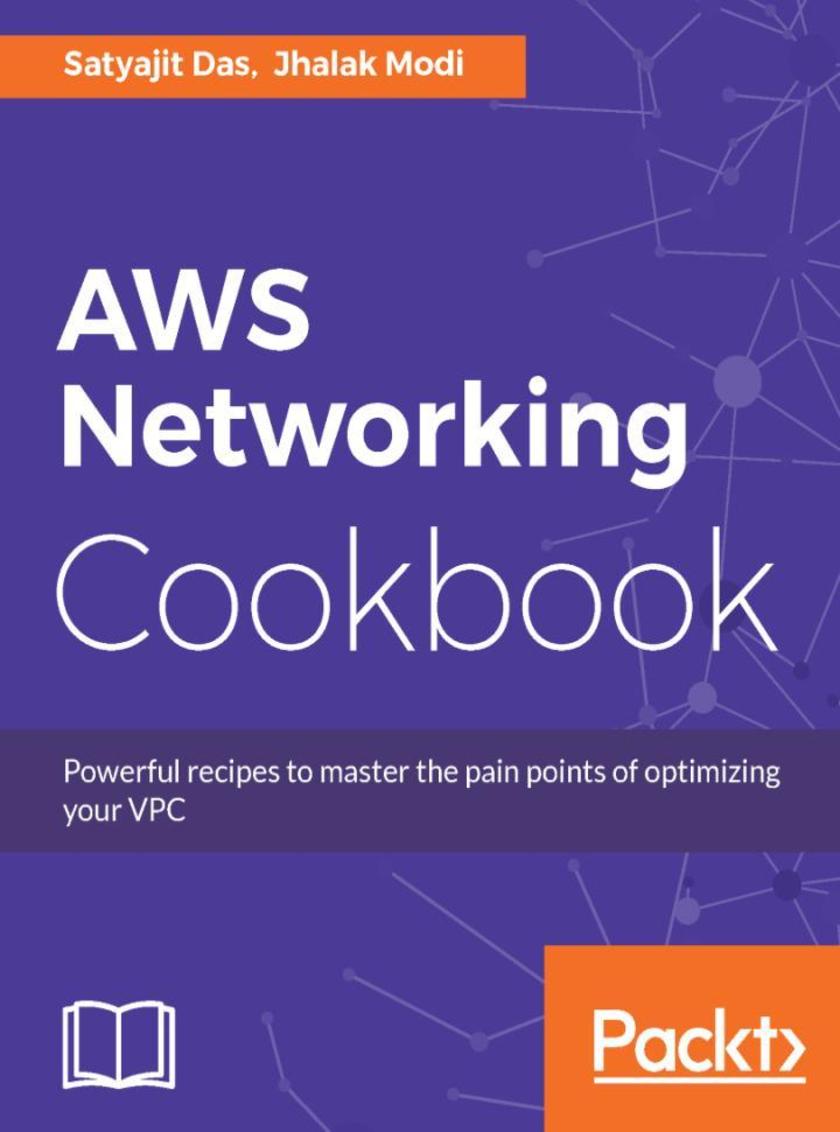
AWS Networking Cookbook
¥80.65
Over 50 recipes covering all you need to know about AWS networking About This Book ? Master AWS networking concepts with AWS Networking Cookbook. ? Design and implement highly available connectivity and multi-regioned AWS solutions ? A recipe-based guide that will eliminate the complications of AWS networking. ? A guide to automate networking services and features Who This Book Is For This book targets administrators, network engineers, and solution architects who are looking at optimizing their cloud platform's connectivity. Some basic understanding of AWS would be beneficial. What You Will Learn ? Create basic network in AWS ? Create production grade network in AWS ? Create global scale network in AWS ? Security and Compliance with AWS Network ? Troubleshooting, best practices and limitations of AWS network ? Pricing model of AWS network components ? Route 53 and Cloudfront concepts and routing policies ? VPC Automation using Ansible and CloudFormation In Detail This book starts with practical recipes on the fundamentals of cloud networking and gradually moves on to configuring networks and implementing infrastructure automation. This book then supplies in-depth recipes on networking components like Network Interface, Internet Gateways, DNS, Elastic IP addresses, and VPN CloudHub. Later, this book also delves into designing, implementing, and optimizing static and dynamic routing architectures, multi-region solutions, and highly available connectivity for your enterprise. Finally, this book will teach you to troubleshoot your VPC's network, increasing your VPC's efficiency. By the end of this book, you will have advanced knowledge of AWS networking concepts and technologies and will have mastered implementing infrastructure automation and optimizing your VPC. Style and approach A set of exciting recipes on using AWS Networking services more effectively.
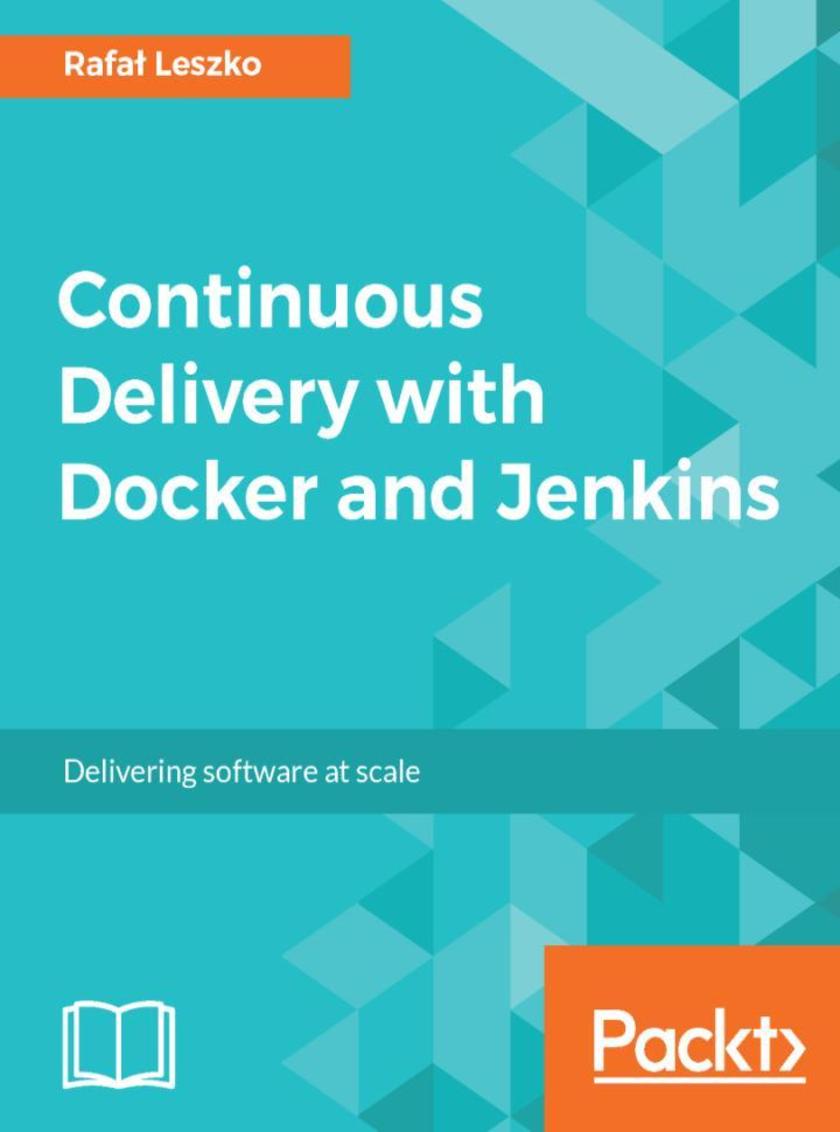
Continuous Delivery with Docker and Jenkins
¥80.65
Unleash the combination of Docker and Jenkins in order to enhance the DevOps workflow About This Book ? Build reliable and secure applications using Docker containers. ? Create a complete Continuous Delivery pipeline using Docker, Jenkins, and Ansible. ? Deliver your applications directly on the Docker Swarm cluster. ? Create more complex solutions using multi-containers and database migrations. Who This Book Is For This book is indented to provide a full overview of deep learning. From the beginner in deep learning and artificial intelligence to the data scientist who wants to become familiar with Theano and its supporting libraries, or have an extended understanding of deep neural nets. Some basic skills in Python programming and computer science will help, as well as skills in elementary algebra and calculus. What You Will Learn ? Get to grips with docker fundamentals and how to dockerize an application for the Continuous Delivery process ? Configure Jenkins and scale it using Docker-based agents ? Understand the principles and the technical aspects of a successful Continuous Delivery pipeline ? Create a complete Continuous Delivery process using modern tools: Docker, Jenkins, and Ansible ? Write acceptance tests using Cucumber and run them in the Docker ecosystem using Jenkins ? Create multi-container applications using Docker Compose ? Managing database changes inside the Continuous Delivery process and understand effective frameworks such as Cucumber and Flyweight ? Build clustering applications with Jenkins using Docker Swarm ? Publish a built Docker image to a Docker Registry and deploy cycles of Jenkins pipelines using community best practices In Detail The combination of Docker and Jenkins improves your Continuous Delivery pipeline using fewer resources. It also helps you scale up your builds, automate tasks and speed up Jenkins performance with the benefits of Docker containerization. This book will explain the advantages of combining Jenkins and Docker to improve the continuous integration and delivery process of app development. It will start with setting up a Docker server and configuring Jenkins on it. It will then provide steps to build applications on Docker files and integrate them with Jenkins using continuous delivery processes such as continuous integration, automated acceptance testing, and configuration management. Moving on you will learn how to ensure quick application deployment with Docker containers along with scaling Jenkins using Docker Swarm. Next, you will get to know how to deploy applications using Docker images and testing them with Jenkins. By the end of the book, you will be enhancing the DevOps workflow by integrating the functionalities of Docker and Jenkins. Style and approach The book is aimed at DevOps Engineers, developers and IT Operations who want to enhance the DevOps culture using Docker and Jenkins.
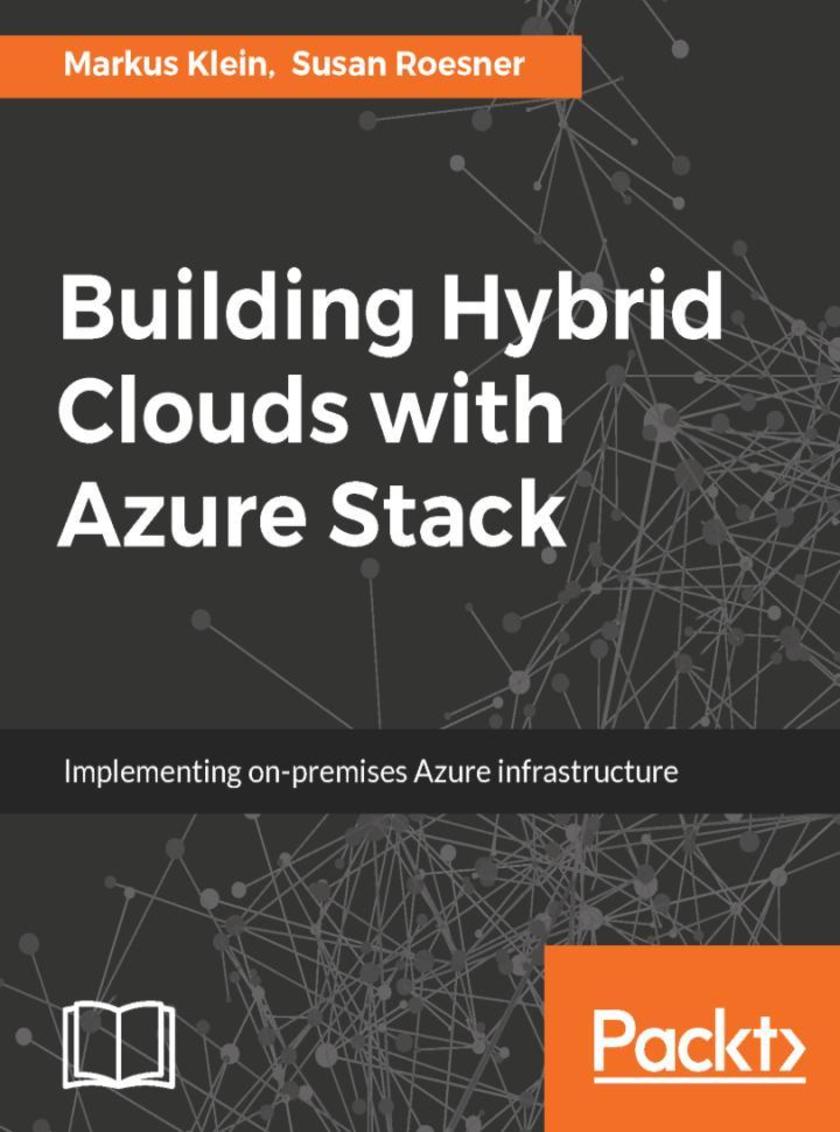
Building Hybrid Clouds with Azure Stack
¥80.65
Bring the power of Microsoft Azure Hybrid Cloud technology to your datacenter. About This Book ? Build and deploy software-defined infrastructures and deliver Azure-based IaaS and Paas services in your datacenter ? Use Azure Stack to leverage your current infrastructure with Microsoft Hybrid Cloud and get the best of both worlds ? Unlock greater levels of performance and flexibility and save your organization money, time, and resources Who This Book Is For The book is for administrators and architects who are planning to implement or administer a hybrid cloud infrastructure using Microsoft Cloud Technology. This book is ideal for those who are looking forward to implement and run a hybrid cloud infrastructure with PaaS, SaaS and IaaS services. What You Will Learn ? Gain a clear understanding of Azure Stack design ? Set up storage, network and compute services in Azure Stack ? Implement and run a hybrid cloud infrastructure with PaaS, SaaS, and IaaS services ? Get an overview of the automation options in Azure Stack ? Integrate Azure public services such as multi-factor authentication and Azure AD with Azure Stack ? Learn about the services available in the future In Detail Azure Stack is all about creating fewer gaps between on-premise and public cloud application deployment. Azure Stack is the next logical evolution of Microsoft Cloud Services to create a true Hybrid Cloud-ready application. This book provides an introduction to Microsoft Azure Stack and the Cloud First Approach. Starting with an introduction to Microsoft Azure Stack Architecture, the book will help you plan and deploy your Microsoft Azure Stack. Next, you will learn about the Network and Storage option in Microsoft Azure Stack and you'll create your own private cloud solution. Finally, you will understand how to integrate Public Cloud Services with Microsoft Azure Stack and extend it using the 3rd Party Resource Provider. After reading the book, you will have a good understanding of an end-to-end process for designing, implementing, offering, and supporting cloud solutions for enterprises or service providers. Style and approach This book is a practical guide to help you unlock a hybrid cloud stack using Azure Stack. Using a straight forward and easy to implement approach, this book guides you through the basic planning for a hybrid cloud stack, describes the infrastructure technologies Azure Stack is based on, and explains how to deploy and administer an Azure Stack-based infrastructure.

Raspberry Pi Zero W Wireless Projects
¥63.21
Build DIY wireless projects using the Raspberry Pi Zero W board About This Book ? Explore the functionalities of the Raspberry Pi Zero W with exciting projects ? Master the wireless features (and extend the use cases) of this $10 chip ? A project-based guide that will teach you to build simple yet exciting projects using the Raspberry Pi Zero W board Who This Book Is For If you are a hobbyist or an enthusiast and want to get your hands on the latest Raspberry Pi Zero W to build exciting wireless projects, then this book is for you. Some prior programming knowledge, with some experience in electronics, would be useful. What You Will Learn ? Set up a router and connect Raspberry Pi Zero W to the internet ? Create a two-wheel mobile robot and control it from your Android device ? Build an automated home bot assistant device ? Host your personal website with the help of Raspberry Pi Zero W ? Connect Raspberry Pi Zero to speakers to play your favorite music ? Set up a web camera connected to the Raspberry Pi Zero W and add another security layer to your home automation In Detail The Raspberry Pi has always been the go–to, lightweight ARM-based computer. The recent launch of the Pi Zero W has not disappointed its audience with its $10 release. "W" here stands for Wireless, denoting that the Raspberry Pi is solely focused on the recent trends for wireless tools and the relevant use cases. This is where our book—Raspberry Pi Zero W Wireless Projects—comes into its own. Each chapter will help you design and build a few DIY projects using the Raspberry Pi Zero W board. First, you will learn how to create a wireless decentralized chat service (client-client) using the Raspberry Pi's features?. Then you will make a simple two-wheel mobile robot and control it via your Android device over your local Wi-Fi network. Further, you will use the board to design a home bot that can be connected to plenty of devices in your home. The next two projects build a simple web streaming security layer using a web camera and portable speakers that will adjust the playlist according to your mood. You will also build a home server to host files and websites using the board. Towards the end, you will create free Alexa voice recognition software and an FPV Pi Camera, which can be used to monitor a system, watch a movie, spy on something, remotely control a drone, and more. By the end of this book, you will have developed the skills required to build exciting and complex projects with Raspberry Pi Zero W. Style and approach A step-by-step guide that will help you design and create simple yet exciting projects using the Raspberry Pi Zero W board.
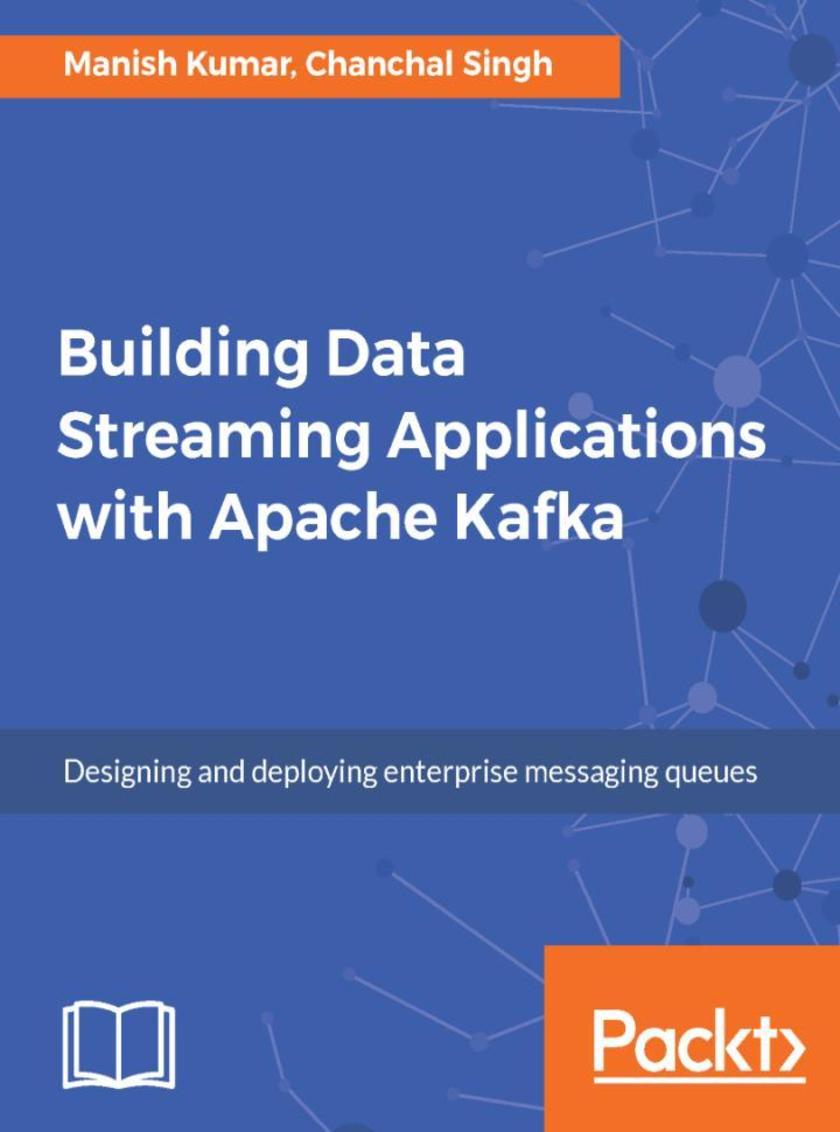
Building Data Streaming Applications with Apache Kafka
¥80.65
Design and administer fast, reliable enterprise messaging systems with Apache Kafka About This Book ? Build efficient real-time streaming applications in Apache Kafka to process data streams of data ? Master the core Kafka APIs to set up Apache Kafka clusters and start writing message producers and consumers ? A comprehensive guide to help you get a solid grasp of the Apache Kafka concepts in Apache Kafka with pracitcalpractical examples Who This Book Is For If you want to learn how to use Apache Kafka and the different tools in the Kafka ecosystem in the easiest possible manner, this book is for you. Some programming experience with Java is required to get the most out of this book What You Will Learn ? Learn the basics of Apache Kafka from scratch ? Use the basic building blocks of a streaming application ? Design effective streaming applications with Kafka using Spark, Storm &, and Heron ? Understand the importance of a low -latency , high- throughput, and fault-tolerant messaging system ? Make effective capacity planning while deploying your Kafka Application ? Understand and implement the best security practices In Detail Apache Kafka is a popular distributed streaming platform that acts as a messaging queue or an enterprise messaging system. It lets you publish and subscribe to a stream of records, and process them in a fault-tolerant way as they occur. This book is a comprehensive guide to designing and architecting enterprise-grade streaming applications using Apache Kafka and other big data tools. It includes best practices for building such applications, and tackles some common challenges such as how to use Kafka efficiently and handle high data volumes with ease. This book first takes you through understanding the type messaging system and then provides a thorough introduction to Apache Kafka and its internal details. The second part of the book takes you through designing streaming application using various frameworks and tools such as Apache Spark, Apache Storm, and more. Once you grasp the basics, we will take you through more advanced concepts in Apache Kafka such as capacity planning and security. By the end of this book, you will have all the information you need to be comfortable with using Apache Kafka, and to design efficient streaming data applications with it. Style and approach A step-by –step, comprehensive guide filled with practical and real- world examples




 购物车
购物车 个人中心
个人中心



